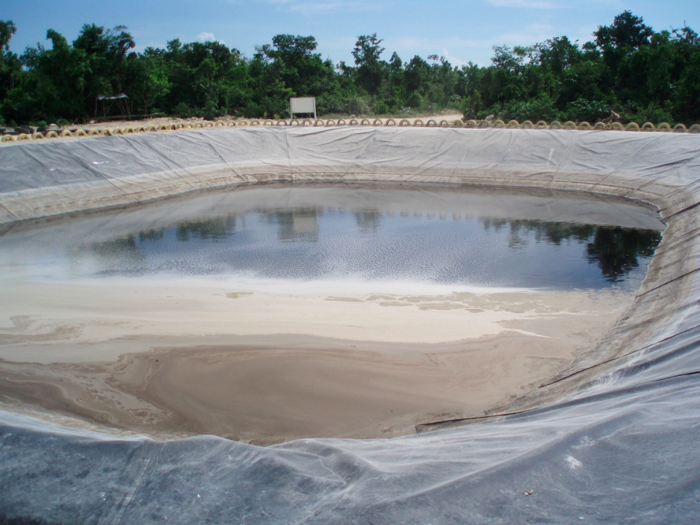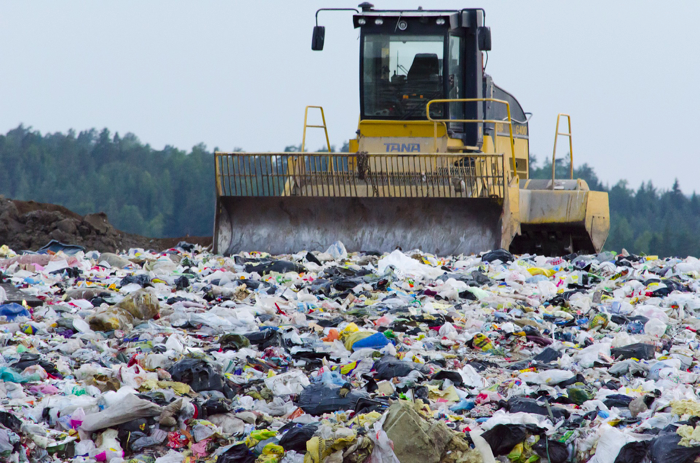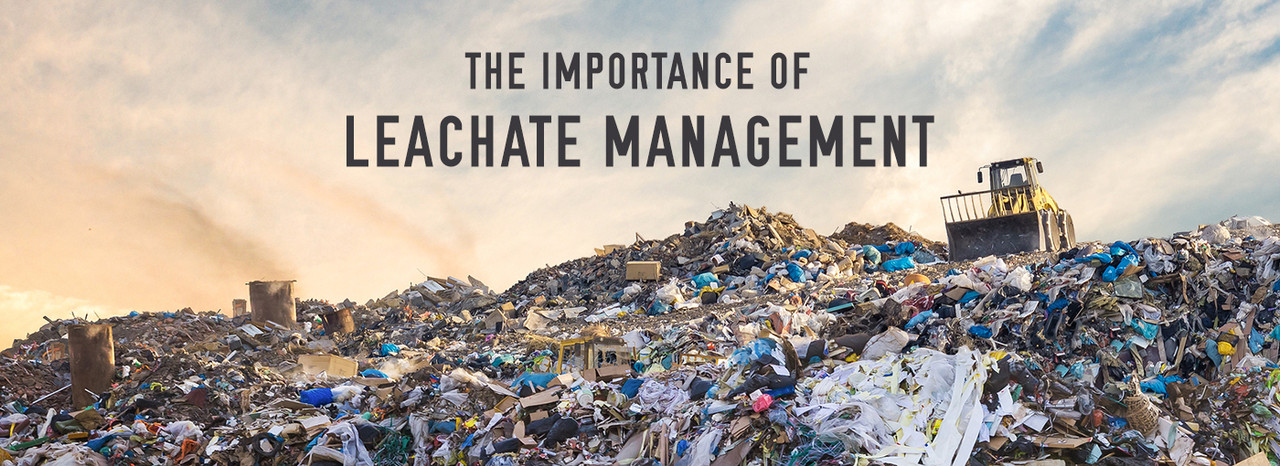Leachate management has grown to become a politically sensitive issue. With leachate contamination threatening municipal water supplies, proper construction and management of the nation’s landfills is becoming increasingly important.
Tightened restrictions on public- owned treatment works (POTW) have also changed what it means to run a legally -compliant landfill site. Most landfills once simply released their leachates into the POTW, but under modern restrictions, managing these contaminants can now take up to 40 percent of a landfill’s operating expenses. As such, having an effective leachate management plan is key to maintaining profitability and limiting environmental liability.

(Courtesy of Victor787 at English Wikipedia, CC BY 3.0, https://commons.wikimedia.org/w/index.php?curid=3...
What Is Leachate?
First of all, it is important to understand what leachate is and why it is troublesome to manage. Leachate, simply put, is liquid that — after passing through solid matter — has collected some of said matter. In the case of landfills, leachate is precipitation that has passed through the landfill’s mass. During its passage, the precipitation collects solid waste decomposition matter, as well as decomposition gases that may be trapped in the landfill mass. These can include methane, carbon dioxide, and any number of hydrocarbons or hydroxyls.
The resulting leachate can be acidic, organic matter-rich, and anaerobic. In landfills where toxic materials are interred, the leachate may be equally toxic. These microbe-enabling fluids can produce offensive odors if they collect on the surface, and can easily contaminate water supplies in small amounts.
Leachate management first came into prominence in Europe. A 1960s exposé in The Sunday Times pointed out that the United Kingdom’s then-policy of choosing landfill sites with permeable underlying strata, to permit the free disposal of leachate buildup, was actually causing environmental distress. The resulting UK acts — the Deposit of Poisonous Waste Acts of 1972 and the 1974 Local Government Act — endowed local governments with the responsibility for of waste disposal and the power to enforce corresponding environmental standards. This led to site selection in groundwater-free clays. American landfills took this one step further by requiring non-inert landfills to be lined with multiple layers of liner before trash can be introduced.
However, these environmentally improved landfills present their own challenges. As with any sealed, lined, hydraulic system, a hydraulic head can form. A proper leachate management system removes enough of the collected leachate from the landfill to prevent a pressurized head from forming, reducing the risk of liner failure and leaks.
A proper leachate management system consists of:
- Liners. Unless the landfill site can be proven to be naturally impermeable or inaccessible to the water table, a liner is required by federal regulation. This liner typically consists of clay barriers, water monitors, and leachate collection and transport mechanisms. The liner can consist of natural or synthetic materials and must be capable of stretching and distortion without tearing. It must also be resistant to puncture, abrasion, chemical damage, ultraviolet light, and temperature variations. Cost and labor considerations are significant factors in choosing a liner system.
- Leachate drainage system. The A leachate drainage system is the collection of catch points and pipes that transport the leachate to the sump or well. This system must be compatible with the expected weight of the waste to be deposited in the landfill, and the type of transport that will be used to move the leachate off-site. The system can be set underneath the landfill mass, in trenches underneath the mass, or above the grade of the landfill site base.
- Filters. The filter layer is used above the drainage system to prevent the entry of solid matter. This can be a granular or geotextile filter.
- Leachate sump or well. The A sump is where the leachate collects once it passes from the drainage system. Sump design must account for the amount of leachate expected to be collected, which can be estimated based on the size of the site and the amount of precipitation that is common for the area. Drainage systems are usually gravity-powered, so a pump is needed to move the leachate from the well to the transports, or to the on-site storage area.
- Collection/treatment membrane. The A collection membrane is the permeable barrier that separates the waste from the ground. The membrane allows some of the leachate to seep into the ground, but not enough to affect the groundwater. The drainage system is typically laid on top of the membrane.
Such a system can have multiple points of failure and can be costly to maintain and repair. It is important that landfills are designed to minimize the need for future retrofits or repairs, and that proper mass- balancing, compacting, and off-loading procedures are followed.

(Courtesy of WikiMedia)
The Importance of Proper Leachate Management
Leachate management and disposal can have a significant effect on a landfill’s bottom line. For many municipal landfills, the ideal scenario is to discharge the leachate into the sewer. Regulations against this, however, exist for good reason, as this form of disposal can have many unforeseen consequences.
Untreated leachates, for example, can contain a number of contaminants that could find their way into the water supply, including plant and animal steroids, pharmaceuticals, household chemicals, and industrial solvents. In one study, samples of leachate were found to contain lidocaine, cotinine (a nicotine byproduct), carisoprodol (a muscle relaxant) and N,N-diethyltoluamide (DEET, an insect repellent). Along with toxic dissolved heavy metals, this can create an anaerobic environment that would kill off the fungus and bacterial communities used by sewage treatment facilities as part of the treatment process.
To dispose of leachate via POTWs, the leachate must first be treated chemically, or with ultraviolet light. Executing this process efficiently and affordably requires significant storage space, facilities, knowledgeable manpower, and a detailed understanding of the waste flow cycle.
Ultimately, the manner in which one deals with leachate disposal will determine the success of the landfill. Immediate financial and legal considerations aside, preventing leachate contamination of local air and water is essential to a municipal landfill’s successful long-term operation, and minor missteps can lead to a loss of patience and faith among the landfill’s neighbors.
Of course, the best way to manage your leachate is to minimize its toxicity before it is created. This means requires having a solid waste separation and sorting process, which keeps harmful waste out of your landfills in the first place. The first step in waste sorting is acquiring the right containers. Trashcans Unlimited offers the best prices on commercial and decorative trash cans and is a trusted source for all your trash can needs.

